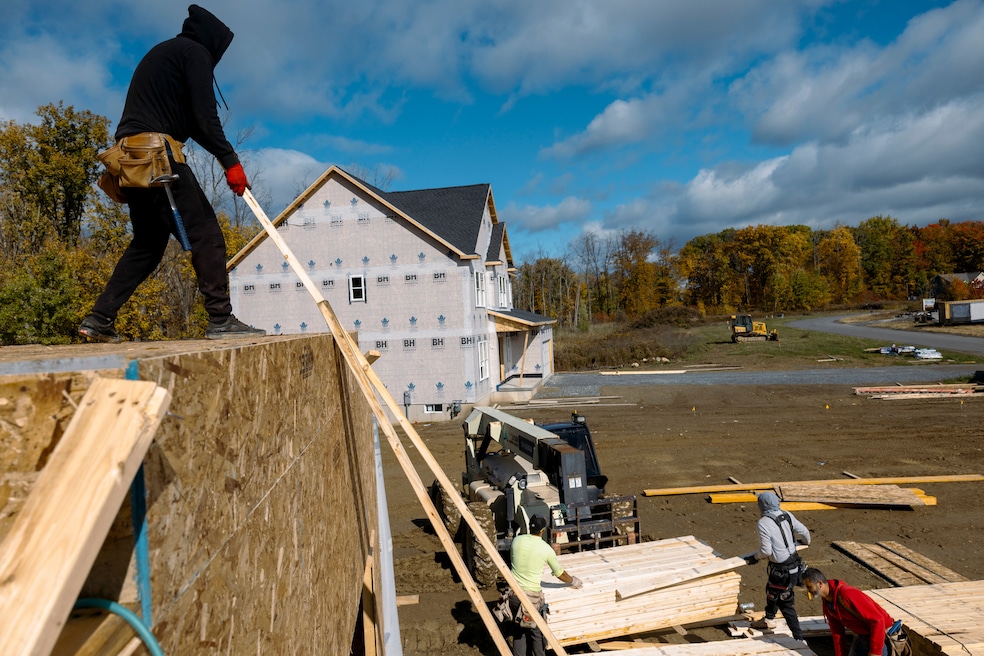Home hunters had best prepare for pricier properties. Builders are betting that the proposed Trump administration tariffs will push up construction costs by thousands of dollars — increases that many will pass on to consumers.
The Trump administration has imposed tariffs on goods from Canada, China and Mexico but postponed the ones affecting U.S. neighbors to the north and south until April 2. Contractors, developers and suppliers said the changes will result in a $9,200 increase per new single-family home, according to the latest National Association of Home Builders/Wells Fargo Housing Market Index report, released last week. Since the announcement of these tariffs in February, many homebuilders across the country have incorporated clauses in new contracts warning homebuyers and developers that the final cost may be higher. NAHB represents about 140,000 members. The monthly survey polls them and non-members.
In early February, the Trump administration called for 25% tariffs on products from Canada and Mexico, as well as a 10% duty on imports from China to combat the flow of illegal drugs like fentanyl across the border, unauthorized entries into the United States, and the president's trade policy agenda. He would later double the tariff on China. The three nations are the biggest trade partners for the housing construction industry. Canada and Mexico have threatened retaliatory tariffs, while China has responded with "sweeping new duties on a variety of American goods," the Associated Press reported.
On Feb. 10, the Trump administration announced that it was going to hike steel and aluminum tariffs. Three days later, Trump said he would impose "reciprocal tariffs" based on what other nations charge the U.S. More tariffs are set for early April, including for the countries sharing the biggest trade deficits with the United States. In addition to the European Union, the list includes China, Mexico, Vietnam, Taiwan, Japan, South Korea, Canada, India, Thailand, Switzerland, Malaysia, Indonesia, Cambodia and South Africa, according to data from the Census Department.
Earlier this month, Trump also imposed a 25% tariff on steel and aluminum imports.
Policies are fueling concerns about job losses
In a globalized world where countries depend on one another for goods and services, builders are bracing for costs to rise.
“I believe there won’t be a market in the country that isn’t affected by these tariffs,” said Jim Tobin, CEO of the National Association of Home Builders.
China, Canada and Mexico, in that order, Tobin said, are the country’s largest building material suppliers. Contractors get fixtures — think ceiling fans, faucets, door handles — from China, lumber and aluminum from Canada for those door frames at the entrance of a home and wall studs, and gypsum from Mexico for the powder used for Sheetrock. Prices for all of that will go up.
Patrick Murphy, investment officer at Miami-based Coastal Construction, said he implemented a new strategy to try to get ahead of the costs, tracking all inputs and material costs at a national level weekly.
“We’ve got spreadsheets constantly tracking what’s going up, what’s going down,” Murphy said, “so we conceive this hopefully in real time.”
Murphy said his team is holding its collective breath to see the impact on construction materials come early April. The uncertainty alone has him and other contractors worried about increased costs and long-term implications, such as job loss.
“The downstream effects of tariffs alone might not do that [job losses]” Murphy said, “but if you combine it with the new immigration policy and a reduced labor force, especially a reduction of the skilled labor force combined with higher interest rates — because those two things are inflationary — then you can see a slowdown in real estate.”
Buyers can expect steeper price tags for single-family homes in the coming months, said Ken Johnson, the Walker Family Chair of Real Estate at the University of Mississippi
“In the end, they [builders] are still in business,” Johnson said, “and they are trying to balance their costs and what they can sell property for and the demand for property.”

